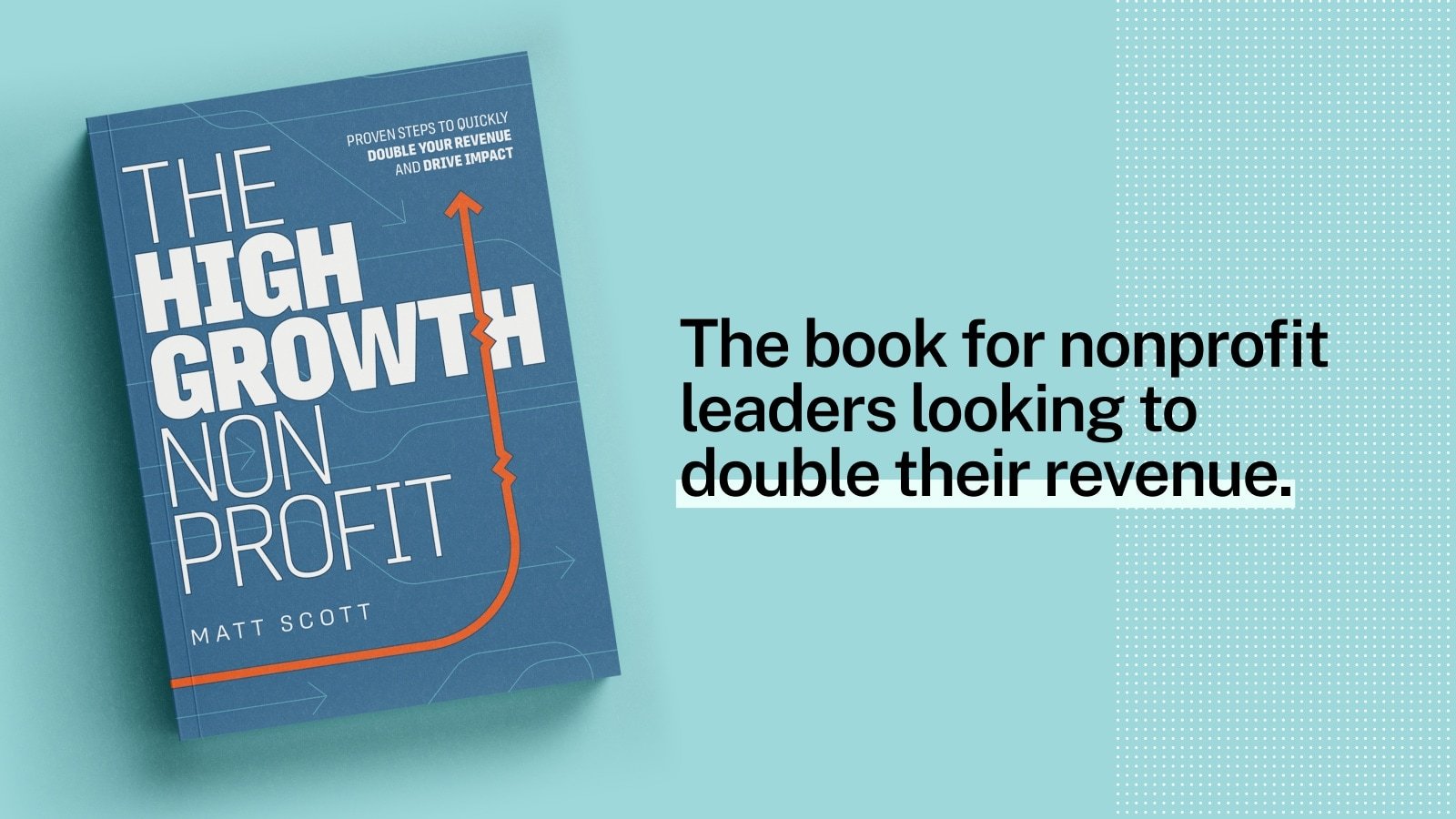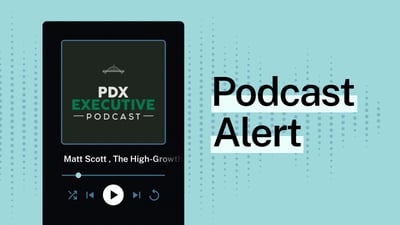The High-Growth Nonprofit, by Matt Scott: Get your free copy!

Nothing centers your focus on things you’ve learned in your career like writing a book about them.
Unless you launch into some stream-of-consciousness, rambling mumbo jumbo, it forces you to categorize your knowledge into specific chapters that make sense.
But within each chapter, it’s easy to succumb to the notion that future readers will hang on your every word, even if it’s Gone With the Wind, Volume II. They won’t.
So you have to be succinct enough to get to the actual heart of the matter, even if there seems to be many hearts of many matters. I had to follow my own advice: Be decisive—pick something and run with it! (Thank you, page 49).
I learned these things (and others) while writing my book, The High-Growth Nonprofit.
I wanted to capture concepts, lessons, and valuable tips gleaned from years of experience, first from within nonprofits and later, leading our growth consultancy, CauseMic.
I believe I’ve done that (to the extent that my first book can!). And now I want to pass it on to nonprofit leaders at no cost.
You may ask, “Why would you do this for free, Matt? There’s some valuable stuff in here!” That’s because CauseMic’s North Star is to help fully fund nonprofits.
Chapter Four covers this North Star notion. It’s the inspirational purpose of an organization—essentially, it’s your why you exist—and a filter through which all major decisions should be run.
So we asked ourselves, “What price should we charge for this book if our North Star is to help nonprofits become fully funded?” The obvious answer was zero.
We’re not being completely altruistic here. The book certainly gives nonprofit leaders food for thought and ideas they can benefit from immediately on their own without outside assistance.
Nonetheless, I also want them to know CauseMic’s services can dramatically help with all areas covered in the book, leading to game-changing efficiency, productivity, technology, and fundraising.
But no matter what’s in the pages, or the services we offer, or any talk of game-changing whatever—none of it matters unless you’re ready to take that first crucial step.
Change your growth mindset from incremental to exponential!
It’s no wonder that the first chapter of The High-Growth Nonprofit is, “Outgrow that 5% Mindset.” Because unless you do just that, the other 23 chapters are kind of useless.
Oftentimes, the growth target year-over-year is thought of in terms of “doable.” Five percent is doable. Ten percent seems doable. Twenty percent is not doable.
Maybe it’s because limited, incremental growth has always been the strategic plan’s target. Something that’s likely achievable with the same or just a little more effort than last year.
Given everyone’s workload, not much more can be expected, right?
Well, compost that thought and let it rot with the other garbage.
Instead, pose this to your team: “What if we had no choice but to double our revenue over the next three years with half the resources? How could we do it?”
Now you’re talking! Suddenly, you’ve replaced “doable” with “desirable.” And that opens a whole lot of doors for creativity and innovation to come bursting in, to boldly go where no revenue has gone before. You also need to add a dollop of ruthless prioritization.
But to get there, strategic planning can’t be business as usual.
We all know the typical methodology for creating a strategic plan.
The leadership team meets with the best of intentions. Agendas, note takers, action items, lots of off-topic and roundabout talking—all the ingredients necessary for, well, more meetings.
Three to six months later, at a cost of over $200,000 (salaries, consulting fees, research, and so on), you’ll have a 50-page strategic plan that’s a real work of art.
It’s perfect for satisfying board and funding requirements but little else. Frankly, that’s because this strategic planning process is broken:
- Leaders lack vital context from executors, clients, and community partners. As such, program needs and organizational blind spots often remain hidden.
- There’s a bias toward documentation at the expense of action. The plan is bloated from anything and everything gleaned from numerous departments and stakeholders.
- Along with this sheer bulk that defies practical use, its lofty tone written for the approval of executives makes it an out-of-touch document for those in more subordinate roles.
- Importantly, the process is ineffective at capturing and operationalizing new ideas.
You need a planning process that actually works, one that includes the most important aspect: STRUCTURE.
Replacing months of meetings with just four mini workshops over a three-week period, our Rapid Growth Workshop creates an actionable One-Page Strategic Plan (OPSP).
Discussed primarily in Chapters 16 and 18, the deceptively simple OPSP lays out your purpose along with who (target audiences), what (goals), where (geographic areas of interest), when (particularly relevant timeframes), and how (the broad, strategic mechanism for accomplishing the “what,” such as new branding).
The four mini workshops are only a half day each, and yet they yield impressive accomplishments. That’s because they consist of facilitated, structured exercises in which everyone can contribute and no one can dominate.
For example, one of our favorite exercises is the problem-solving framework.
It starts with as many organizational problems as can be written (each on a separate sticky note) by all attendees. Each person votes with multiple sticky dots to identify the top problems.
The session ends with high-impact, low-effort solutions featuring immediately doable steps, again through the voting process. All done mostly in silence.
Throughout the Rapid Growth Workshop, we facilitate such exercises—you simply participate!
You end up with an inclusive, readily executable strategic plan built for exponential growth, complete with a shareable executive summary of all necessary steps and who’s responsible.
Along with structured exercises, you’ll find other systems in the book for turning ideas into action.
I’m happy to make sure you have your free copy of The High-Growth Nonprofit. And even if just one paragraph helps you grow your organization, you’ll have to admit it was worth the price!


